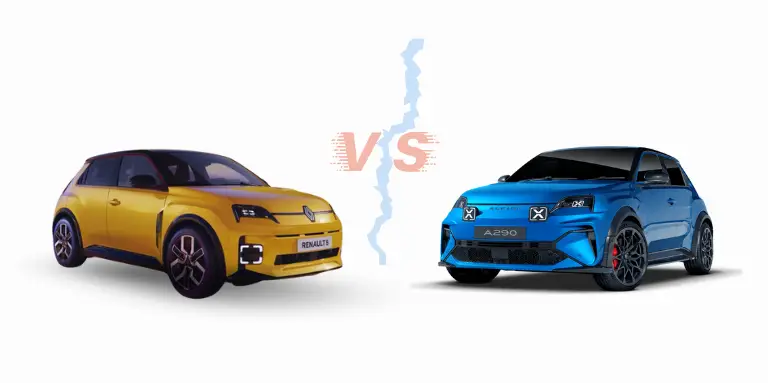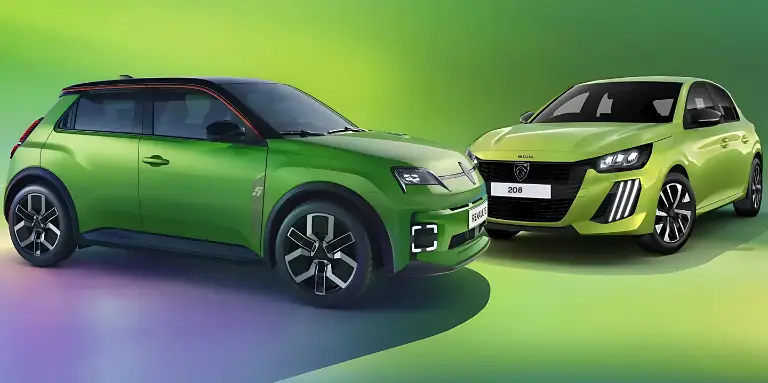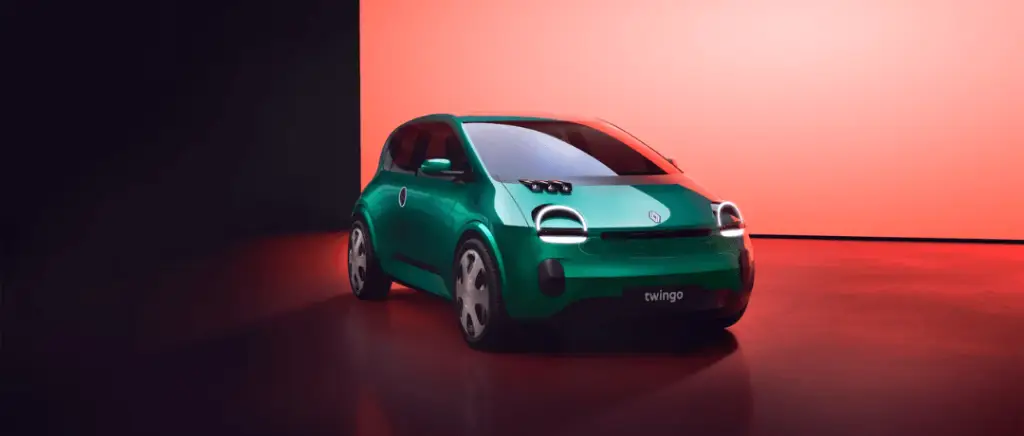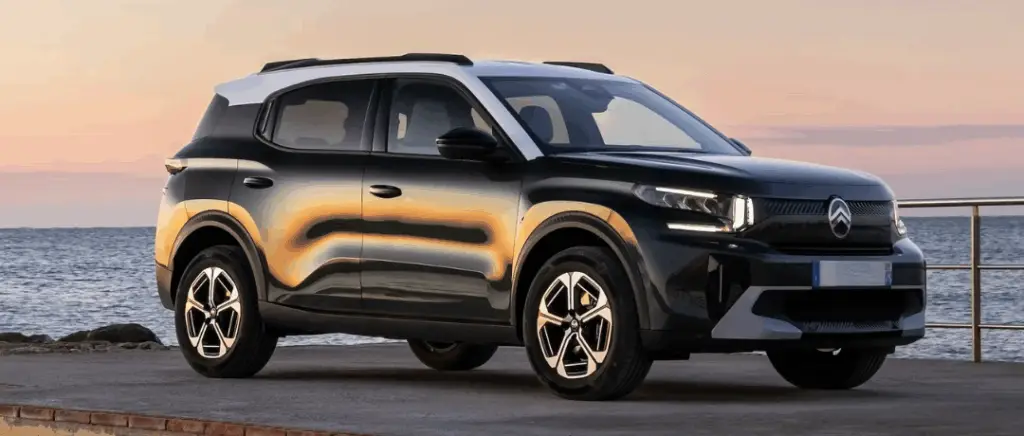For individuals and businesses
Performance and autonomy Which model best meets the needs of modern drivers?
Comparison of power and acceleration between the Renault 5 electric and the Alpine A290
La Renault 5 electricwith its power of around 100 bhp (74 kW), accelerates from 0 to 100 km/h in around 9 seconds. It's designed to deliver a smooth, pleasant drive, ideal for city traffic and everyday journeys. This moderate powerplant maintains fuel efficiency while offering enough dynamism for longer journeys.
In comparison, theAlpine A290with its higher output of 230bhp (170kW), is much sportier. It can reach 100 kph in just 6 seconds, putting it in the category of high-performance electric city cars, with a more responsive, responsive driving style. This difference in power translates into much quicker acceleration and greater driving pleasure, especially for those looking for a thrill.
See also our article :
Renault 5 electric vs Alpine A290: what is the real range of these two electric city cars?
In terms of autonomy, the Renault 5 electric is around 400 km on the WLTP cycle, thanks to its battery 42 kWh, making it an excellent choice for urban and suburban journeys, while still being able to cover longer distances without too much worry. Its energy efficiency maximises the use of its battery capacity.
The Alpine A290, with its 50 kWh battery, offers a slightly shorter range of around 350 km in the WLTP cycle. This more modest range is partly explained by its more powerful engine, which consumes more energy during its sporting performances. However, it is still sufficient for daily and urban journeys, while offering a more dynamic driving experience.
Design and interior: sleek elegance or bold sportiness?
Renault 5 electric vs Alpine A290: what styling innovations differentiate these two electric models?
The two models present distinct stylistic visions while sharing the brand's heritage Renault electric. La Renault 5 electric is largely inspired by the design of the Renault 5 from the 1970s, but with a modern twist. It combines retro and contemporary elements, such as its C-shaped rear lights and sleek silhouette. The result is a compact, dynamic and elegant car that recalls its heritage yet is resolutely contemporary.
For its part, theAlpine A290 is distinguished by its bolder, sportier look, true to the spirit of the Alpine brand. With its more aggressive lines, wide air intakes and lower stance, the A290 adopts an aesthetic inspired by racing cars. Its design aerodynamicsThe Renault 5, with its specific rims and athletic silhouette, emphasises its performance side. The Renault 5, for example, favours a refined, retro style, while the Alpine A290 focuses on a sporty, futuristic look.
Ergonomics and on-board technologies: what kind of experience do these vehicles offer?
In terms of ergonomics and technology, the Renault 5 electric features a simple, practical interface designed to provide a pleasant driving experience every day. Its interior features a compact digital dashboard, an easily accessible touchscreen and a sleek design that promotes ease of use. It also features modern technologies such as park assist, wireless connectivity and tools to optimise energy management.
In a different way, theAlpine A290 focuses on a more performance-oriented interior, with premium materials and seats designed for a sportier driving experience. Its infotainment system is more advanced, with a larger touchscreen and responsive interface, allowing for a more personalised experience. The Alpine also features technologies such as head-up display, adjustable driving modes and more precise controls, offering a more immersive and dynamic experience. In short, the Renault 5 focuses on simplicity and everyday comfort, while the Alpine A290 promotes a more connected and sporty driving experience.
See also our article :
On-board technology: are the Renault 5 and Alpine A290 at the cutting edge?
What technological advances are boosting the appeal of these city cars?
La Renault 5 electric is distinguished by technologies that make everyday use easier. Its energy management system is optimised to maximise range, while advanced connectivity, with options such as Apple CarPlay and Android Auto, enables seamless smartphone integration. What's more, the car benefits from remote updates, allowing owners to take advantage of the latest improvements without visiting a dealership.
For theAlpine A290 focuses on more performance-oriented technologies, such as a dynamic suspension system and adjustable driving modes that allow the vehicle to adapt to driving conditions. The infotainment system is also more advanced, with a larger screen and a more responsive interface, while technologies such as head-up display add a modern touch. These features add to the appeal of the Alpine, particularly for those looking for a sporty, connected drive.
How do their assistance systems improve safety and driving?
La Renault 5 electric incorporates a number of driving assistance systems to enhance safety, such as lane departure warning, lane keeping assist and autonomous emergency braking. These technologies make driving safer and calmer, particularly in town, by reducing the risk of accidents.
L'Alpine A290while offering similar basic systems, goes a step further with more powerful driving aids, such as proximity sensors to make manoeuvring and parking easier, and active stability control. What's more, its adaptive driving modes adjust the vehicle's dynamics according to driving conditions, ensuring optimum safety during sporty driving or on winding roads. These systems enable each vehicle to offer a safer and more enjoyable drive, while adapting to the specific needs of the driver.
Value for money: which is most affordable for discerning drivers?
Analysis of prices and options available for the Renault 5 and Alpine A290
The Renault 5 E-Tech is positioned as an affordable electric city car, with a starting price of around €25,000 in France. This aggressive price positioning is designed to democratise electric mobility. The range should be built around several trim levels and two battery capacities (40 and 52 kWh), to suit different budgets and range requirements. Top-of-the-range versions could come in at around €35,000, keeping them competitive with the competition.
The Alpine A290, a sports version based on the same platform, will naturally be priced higher, probably between €35,000 and €45,000. The difference in price is justified by the increased performance, thanks in particular to a more powerful engine, specific sports tuning and premium equipment. The Alpine brand is targeting a different clientele, one that is more attached to performance than to entry-level price.
What financial advantages and ecological bonuses can tip the balance?
As far as financial benefits are concerned, these vehicles mainly benefit from the French ecological bonus, currently set at €4,000 for private individuals (subject to means testing). This bonus has been maintained at this level since the last review in 2024. It is important to note that the conversion bonus has been abolished since 2 December 2024, as part of the budget cuts in the 2025 Finance Bill. However, a ZFE bonus of €1,000 is available for households living or working in Low Emission Zones. In addition, depending on the region or local authority, local grants may be added to the national bonus, helping to reduce the final cost of purchase.
The benefits also extend to running costs. The tax advantages of electric vehicles include total or partial exemption from registration fees, depending on the region. Running costs are also reduced, thanks to lower maintenance costs and lower fuel costs than for combustion-powered vehicles, particularly for users with access to a home charging point.
For businesses, these vehicles continue to benefit from tax advantages, including exemption from TVS (Taxe sur les Véhicules de Société) and deductibility of VAT on the electricity used for recharging. These incentives, combined with social leasing for certain models, can make these vehicles particularly attractive, both for private individuals and as part of a company fleet.
See also our article :
Renault 5 electric or Alpine A290: which choice for which driver profile?
Renault 5 electric vs Alpine A290: comparison table summarising key features for an informed choice
| Features | Renault 5 electric | Alpine A290 |
|---|---|---|
| Power | 100 bhp (74 kW) | 230 bhp (170 kW) |
| Acceleration 0-100 km/h | 9 seconds | 6 seconds |
| Range (WLTP) | 400 km | 350 km |
| Battery capacity | 42 kWh | 50 kWh |
| Starting price | 25 000 € | 35 000 - 45 000 € |
| Design | Retro-modern, uncluttered | Sporty and daring |
| On-board technology | Oriented towards everyday practicality | Focused on performance |
| Target audience | General public, urban use | Sporty driving enthusiasts |
| Ecological bonus | 4 000€ | 4 000€ |
Conclusion
The Renault 5 electric and the Alpine A290 offer two distinct visions of the electric city car. The Renault 5 seduces with its accessibility, generous range and retro-modern design, ideal for everyday use. The Alpine A290, on the other hand, appeals to lovers of sporty driving, with its high power, dynamism and bold design.
The choice will depend on your priorities: practicality and economy with the Renault 5, or performance and sensations with the Alpine A290, two models that testify to the promising future of electric city cars.
Use the TCO simulator to calculate the total cost of ownership of your car and compare it with its internal combustion equivalent.



































